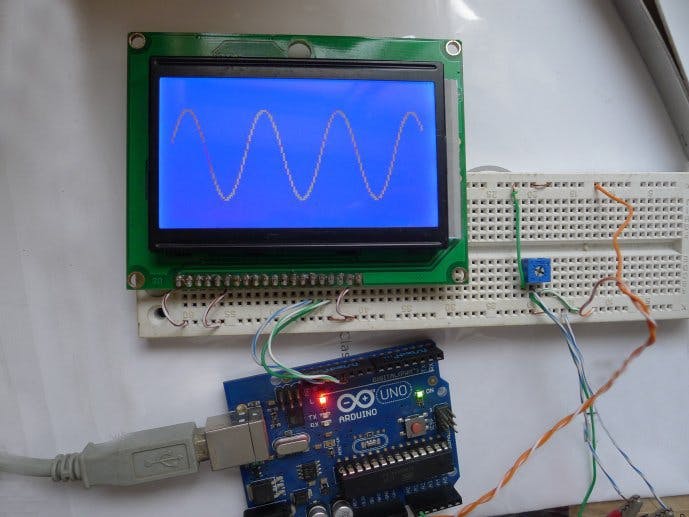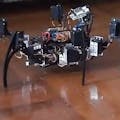Recently I used an Arduino for a digital oscilloscope experiment. It is very interesting to experiment with. The programming uses a u8g library file that supports multiple LCD displays. There is no need to know how a microcontroller works, nor care about the LCD driver. It makes programming very simple.
The display used is 12864 LCD driven by the ST7920 with an Arduino UNO. Here is the circuit diagram. (You can redeem it from PCBWay, please support me by registering with my invitation PCBWay link.)
After running the basic code, the waveform of the input signal can be displayed.
Using the ADC inside the microcontroller for digital-to-analog conversion, up to about 1.5KHz input signal can be displayed.
Here is the basic code:
#include <U8glib.h>
U8GLIB_ST7920_128X64_4X u8g(13, 12, 11);
int x, y; int Buffer[128];
void setup( ) { }
void loop( )
{
for(x = 0;x < 128;x++)
Buffer[x] = 63-(analogRead(A0)>>4);
u8g.firstPage();
do
{
for(x = 1;x < 127;x++)
u8g.drawLine(x, Buffer[x], x, Buffer[x+1]); }
while(u8g.nextPage( ));
}
Waveform diagram as shown:
#include <U8glib.h>
U8GLIB_ST7920_128X64_4X u8g(13, 12, 11);
int x, y; int Buffer[128];
void setup( )
{
analogReference(INTERNAL);
}
void loop( )
{
for(x = 0;x < 128;x++)
Buffer[x] = 63-(analogRead(A0)>>4);
u8g.firstPage();
do
{
for(x = 0;x < 127;x++)
u8g.drawLine(x, Buffer[x], x, Buffer[x+1]);
u8g.drawLine(64, 0, 64, 63);
u8g.drawLine(0, 32, 128, 32);
for(x=0;x<128;x+=8)
u8g.drawLine(x, 31, x, 33);
for(x=0;x<64;x+=8)
u8g.drawLine(63, x, 65, x);
u8g.drawFrame(0, 0, 128, 64);
}
while( u8g.nextPage( ));
}
Here is the final version:




_ztBMuBhMHo.jpg?auto=compress%2Cformat&w=48&h=48&fit=fill&bg=ffffff)







Comments